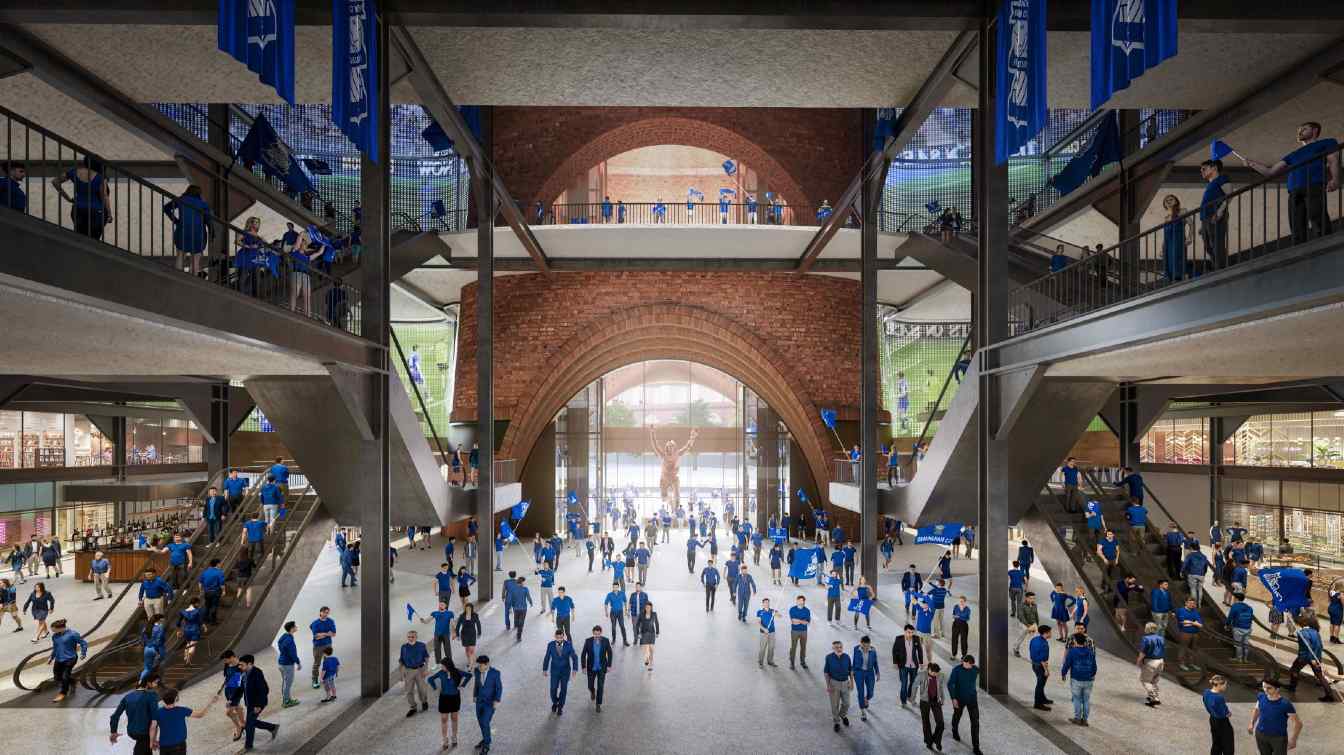England: Birmingham City shocks with 62,000-seat powerhouse stadium
source: StadiumDB.com; author: Kuba Kowalski
 Birmingham City has unveiled a new stadium project designed to hold 62,000 spectators. The stadium is set to be the heart of the vast "Sports Quarter". English fans weren’t sure whether the visualizations were created by artificial intelligence or actually came from the club.
Birmingham City has unveiled a new stadium project designed to hold 62,000 spectators. The stadium is set to be the heart of the vast "Sports Quarter". English fans weren’t sure whether the visualizations were created by artificial intelligence or actually came from the club.
Advertisement
One of the largest stadiums in the country for a Championship club
Birmingham City Football Club officially presented on November 20, 2025, a design for a new football stadium with a capacity of 62,000 seats, to be built in the Bordesley Green district of Birmingham. The investment is a key part of an ambitious city revitalization plan worth at least £2.5 billion (approximately $3.2 billion). The new stadium, tentatively named The Birmingham City Powerhouse,
will be the largest stadium in the Midlands region and one of the biggest in England. Its location on a 48-acre site, a former Birmingham Wheels race track, is set to become the center of the new sports complex.
The stadium project was developed in cooperation between two respected architectural firms: London's Heatherwick Studio, led by Thomas Heatherwick, and the American MANICA Architecture. The architects were inspired by Birmingham’s industrial heritage – twelve massive chimneys reminiscent of those from former brickworks in the area, which not only define the building's shape but also serve ventilation and communication functions, housing elevators, stairs, and the city’s highest panoramic bar. The structure therefore has a strong connection to local history, emphasizing the unique character of the facility.
The stadium will be modern and multifunctional – equipped with a retractable roof that can close within 20 minutes, as well as a movable pitch adaptable for various sports including football, American football, and rugby. The interior is designed with an emphasis on acoustics and proximity of fans to the pitch – the stands will be steep, creating an intense match atmosphere while minimizing noise in surrounding neighborhoods. Around the stadium, conceptual urban spaces will be created: plazas, cafes, markets, play areas for children – creating a lively community meeting point.
 © MANICA Architecture, Heatherwick Studio
© MANICA Architecture, Heatherwick Studio
Serious players and serious plans
The strategic investor in the project is Knighthead Capital, which has invested £100 million and secured government support. The co-owner of Knighthead Capital and the club is American financier Tom Wagner, and among the shareholders is former NFL player Tom Brady, who highlights the multifunctionality and prestige of the arena. The planned opening date for the stadium is the 2030/31 season, although the management admits this is an ambitious goal.
Advertisement
 StadiumDB
StadiumDB